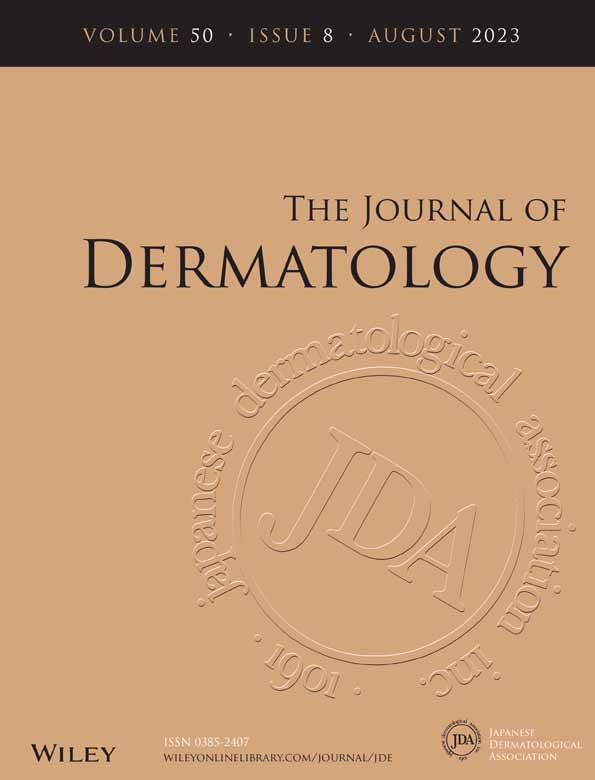Whole-exome sequencing of secondary tumors arising from nevus sebaceous revealed additional genomic alterations besides RAS mutations
Yeun-Jun Chung and Ji Hyun Lee contributed equally to this paper.
Abstract
Nevus sebaceous (NS) is a congenital hamartoma associated with an increased risk of secondary neoplasms in approximately 10%–20% of patients. However, additional genomic alterations underlying tumorigenesis in NS lesions have not been clarified. We performed whole-exome sequencing of archived tumor tissues (n = 8; six basal cell carcinomas and two trichoepitheliomas) and matched germline tissues (n = 7) with from seven patients with secondary tumors arising from NS. We also analyzed NS lesions without secondary tumors (n = 8). Somatic mutations and copy number alterations (CNAs) were analyzed. We identified a median of 129 somatic mutations (corresponding to 2.6/Mb in target regions, range 26–336) for eight tumors, while a median of 118 somatic mutations (2.3/Mb, range 1–196) for eight NS lesions. Known RAS hotspot mutations were found in seven of the eight tumors (six for HRAS p.G13R and one for HRAS p.Q61R) and in six of the eight NS lesions (four for HRAS p.G13R, one for KRAS p.G12C, and one KRAS p.G12D). Except RAS mutations, several putative driver mutations were detected in tumors: TP53 p.F134L/p.R213*, MYCN p.P59L, OR2Z1 p.P167S, PTPN14 p.Q768*, and SMO p.W535L. As for CNAs, two tumors harbored copy-loss in regions encompassing PTCH1 gene. However, eight NS lesions did not harbor both putative driver mutations and CNAs. In conclusion, our study revealed that secondary tumors arising from NS harbor known RAS hotspot mutations and additional genomic alterations, including putative driver mutations and PTCH1 copy-loss. These results could help to define the high-risk group for tumor development in patients with NS and provide evidence for prophylactic resection.
CONFLICT OF INTEREST STATEMENT
None declared.
Open Research
DATA AVAILABILITY STATEMENT
The raw sequence reads were deposited in the Sequence Read Archive (SRA) database (Project ID: PRJNA752405). The codes for the analyzing whole-exome sequencing data has been deposited with GitHub (https://github.com/Yoon-Seob-Kim/Sebaceous).




